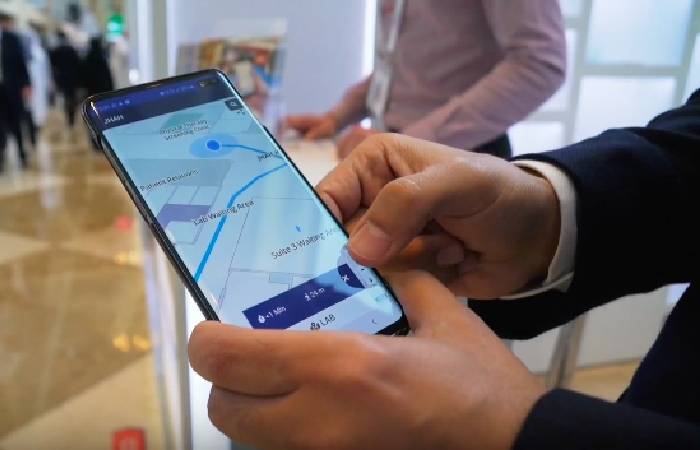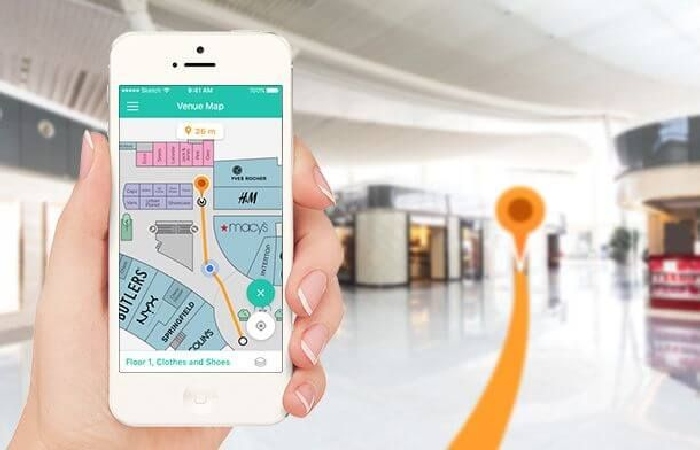Typically, you can navigate from Spot A to B by using GPS. However, a GPS fails to work appropriately indoors, which is why you may require a different system. This is where indoor navigation or indoor wayfinding becomes useful, especially when the industry is in such a booming stage. But what’s indoor navigation? Do you know all about it? So, read this article to find out.
Table of Contents
Indoor Navigation: How is it Used?
Individuals will get a floor map on their laptops or smartphones to use indoor navigation. The map will be either displayed in a browser window or an app. After that, users can search for locations to get instructed to a particular spot easily with the help of interdependent step-by-step dot navigation.
Moreover, there will be a continual update for the user’s position, and the accuracy will be somewhere between 1 meter to 5 meters. The accuracy and the constant updates mainly depend on the building material, the technology used, ceiling height, etc.
Whether it’s offices, airports, hospitals, malls, or museums, all types of complex buildings use indoor navigation technology. However, the technology is primarily used by most health care facilities. You can use indoor navigation to find:
- A hospital wing
- A specific store
- An elevator
- An airport gate.
Today, indoor navigation has emerged as the best route for individuals having disabilities. Moreover, this technology enables users to receive push notifications and other similar content. It helps them send information (like timetables) and offers to the visitors around the place.
Indoor Navigation: Key Benefits

Firstly, indoor navigation plays a crucial role in enhancing the overall customer experience while increasing visitor satisfaction.
You may know what it feels like to run from one floor of the building to another without finding the place or spot you were look for. That’s the exact type of annoying situation that indoor navigation helps resolve.
Moreover, indoor navigation effectively reduces costs, such as the cost of employees. What’s more? The information you acquire from the users will help you make informed and more thoughtful decisions for the space.
Lastly, indoor navigation helps in engaging visitors with pertinent offers. For instance, if an individual walks towards a store like Starbucks, they will get a notification on their smartphone with a relevant offer.
Indoor Navigation: How Does it Work?
Indoor navigation uses one of the most advanced technologies an positioning system (IPS), also known as indoor location tracking. The position is calculated on the individual’s device, and that’s how it got its name – client-side positioning. However, the best indoor navigation system can use different kinds of technologies, which include the following:
Beacons
Earlier, the cost of indoor was overpriced. However, with the advent of effective technologies like beacons, the prices of indoor navigation have fallen, and the system has become more user-friendly now.
The nearby smartphones detect the signal by using the Bluetooth Smart. The phone uses an ID number given by the signal to determine the user’s location. It is a real-time situation. Despite showing a static map, beacons are utilized for guiding individuals through a space.
WIFI-Based Systems
Tags or WIFI transmitters are the pillars of a WIFI-based system. These tags transmit simple packets to the building’s WIFI access points. The time and strength of that particular reading are calculated and reported by the indoor navigation sensors. This way, algorithms can find the user’s position.
Ultra Wide-Band Systems
UWB or Ultra Wide-Band sends a wide pulse on top of a GHz spectrum and pays attention to chirps from the ultra wide-band tags. A short, precise, and instant burst gets created from the tags so that the ultra wide-band readers can report a precise time measurement from these tags. However, this system is considered somewhat costly as several tags are required for this precise/accurate positioning.
Acoustic Systems
Acoustic systems work more like a UWB. What makes it different? It relies on and uses sound instead of radio signals. The sound is picked up by the receivers while they locate tags. However, this system is still considered a niche technology.
Infrared Systems
IR or Infrared systems locate signals inside the building by using infrared light pulses. IR receivers need to be installed in every room. When the IR tag pulses, the IR receiver reads the device. However, the IR system issue is that the IR readers’ installation should be done on the ceiling.
New Technologies
Constant development and improvement are going for indoor navigation technology. For instance, several companies have developed the latest version of this technology – an augmented reality navigation solution.
What’s more? Companies are working on updating the technology to develop an indoor navigation solution by using the Earth’s magnetic field, which can be detected in smartphones by using a built-in sensor. This will enable the use of indoor navigation systems to spots where it’s not feasible.
Indoor Navigation: What is its Future?

It is often referred to as the last navigation frontier, but is there any possibility for its growth?
Since the creation of the principle of maps, it hasn’t changed that much. It is widely used to show roads, delimitations, borders, and find your way. That said, humankind has reached far ahead of the world of paper and pen maps and adapted the interactive and digital maps on screens.
Although it’s impossible to say what the future of indoor navigation holds, some clues do point out a few things. First, which has already started, is to get more accurate information. The next thing is the amalgamation of augmented reality in wayfinding.
Lastly, there’s no doubt that technological evolution will influence the accuracy of indoor positioning and indoor wayfinding. It will happen until there isn’t any more margin of error for distances and routing.
Final Thoughts
So, from this comprehensive guide, you must have your answer to navigation. Conclusively, it is an advanced technology that helps ensure that all your customers and visitors have a great time and a superb experience. It’s the ultimate way to alleviate the exasperation of navigating complex buildings.
Also Read: The Best Tools and Gadgets for Manufacturing


